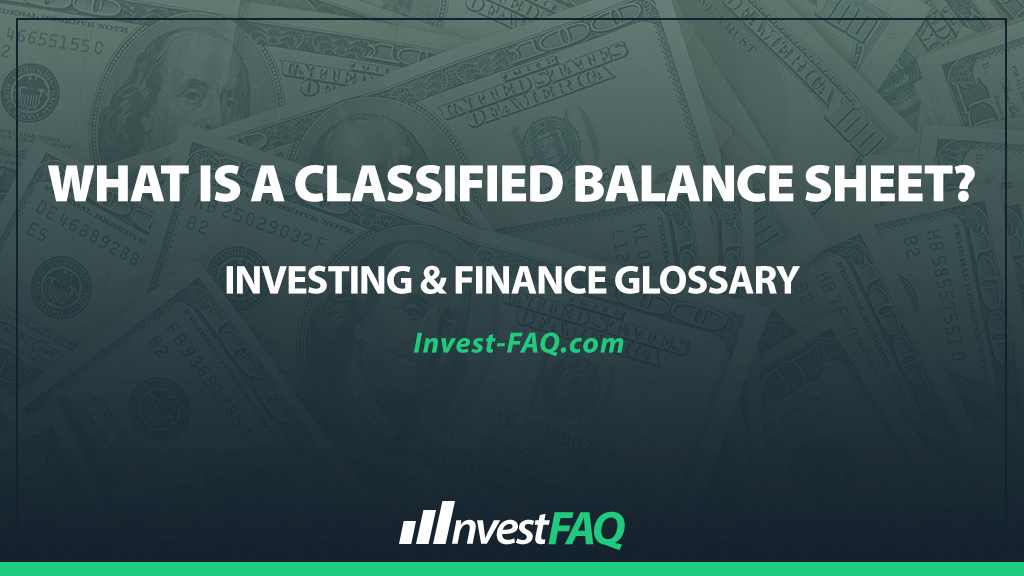
Classified Balance Sheet
Contents
A classified balance sheet is a financial statement that presents the assets, liabilities, and equity of a company in distinct categories or classifications. This organization enhances the clarity and understanding of the company’s financial position by grouping similar items together, such as current assets, long-term assets, current liabilities, and long-term liabilities.
Businesses use classified balance sheets to provide stakeholders, including investors, creditors, and management, with detailed insights into the company’s financial health.
By categorizing assets and liabilities, it becomes easier to assess the company’s liquidity, solvency, and operational efficiency. This detailed classification aids in financial analysis, planning, and decision-making processes.
Example of a Classified Balance Sheet
“Supreme Manufacturing Co.” prepares a classified balance sheet at the end of the fiscal year. The balance sheet includes:
Current Assets: Cash $50,000, Accounts Receivable $30,000, Inventory $20,000.
Property, Plant, and Equipment (Net of Depreciation): $200,000.
Current Liabilities: Accounts Payable $40,000, Short-term Loans $10,000.
Long-term Liabilities: Mortgage Payable $100,000.
Stockholders’ Equity: Common Stock $100,000, Retained Earnings $50,000.
In Supreme Manufacturing Co.’s classified balance sheet, assets and liabilities are organized into current and long-term categories. Current assets, expected to be converted to cash within one year, include cash, accounts receivable, and inventory.
Long-term assets, useful for more than one year, primarily consist of property, plant, and equipment. Similarly, liabilities are divided into current liabilities, due within a year, and long-term liabilities, payable beyond one year.
This classification helps assess the company’s ability to meet its short-term obligations with its short-term assets (liquidity) and understand the long-term financial commitments (solvency).
Significance for Investing & Finance
The classified balance sheet is significant in accounting for several reasons:
Enhanced Financial Analysis: It enables detailed financial analysis, such as calculating liquidity ratios (e.g., current ratio) and solvency ratios (e.g., debt to equity ratio), providing insights into financial stability.
Improved Stakeholder Understanding: The clear categorization of assets and liabilities improves stakeholders’ understanding of the company’s financial position, aiding in investment and lending decisions.
Strategic Planning and Decision Making: By providing a snapshot of the company’s financial health, classified balance sheets assist management in strategic planning and operational decision-making.
Regulatory Compliance and Reporting: Classified balance sheets comply with accounting standards and principles, facilitating uniformity and comparability across financial reports.
In summary, a classified balance sheet is a crucial financial statement that categorizes a company’s assets, liabilities, and equity into distinct groups, offering a comprehensive view of its financial health.
This level of detail supports effective financial analysis, strategic planning, and informed decision-making, making it an indispensable tool in accounting and business management.
FAQ
What makes current assets different from long-term assets on a classified balance sheet?
Current assets are expected to be converted into cash or used up within one year or one operating cycle, whichever is longer, while long-term assets, such as property, plant, and equipment, are held for more than one year and are used in the operations of the business.
Why are liabilities separated into current and long-term on a classified balance sheet?
Liabilities are categorized as current if they are due within one year or one operating cycle of the business, and as long-term if they are due after more than one year, helping assess the company’s short-term financial obligations and long-term debt commitments.
How does a classified balance sheet aid in financial analysis?
A classified balance sheet enhances financial analysis by enabling the calculation of key financial ratios, such as liquidity ratios (current ratio, quick ratio) and solvency ratios (debt to equity ratio), which provide insights into the company’s financial health and operational efficiency.
Can equity be classified on a balance sheet, and if so, how?
Yes, equity is typically classified into categories such as common stock, preferred stock, retained earnings, and additional paid-in capital, providing a clear picture of the company’s ownership structure and the accumulation of profits or losses over time.
